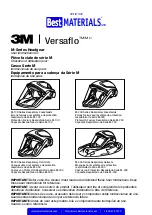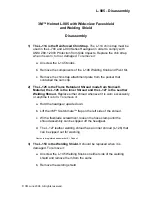
10
english
6.1
Basic knowledge about IO-Link
General
IO-Link integrates conventional and intelligent sensors and
targets in automation systems and is intended as a
communication standard below classic field buses. Field-
bus-independent transfer uses communication systems
that are already available (field buses or Ethernet-based
systems).
IO-Link devices, such as sensors and targets, are
connected to the controlling system using a point-to-point
connection via a gateway, the IO-Link master. The IO-Link
devices are connected using commercially available
unshielded standard sensor cables.
Communication is based on a standard UART protocol
with a 24-V pulse modulation in half-duplex operation. This
allows classic three-conductor physics.
Protocol
With IO-Link communication, permanently defined frames
are cyclically exchanged between the IO-Link master and
the IO-Link device. In this protocol, both process and
required data, such as parameters or diagnostic data, is
transferred. The size and the type of the frame and the
cycle time used result from the combination of master and
device features (see Device specification on page 11).
Cycle time
The cycle time used (master cycle time) results from the
minimum possible cycle time of the IO-Link device
(min cycle time) and the minimum possible cycle time of
the IO-Link master. When selecting the IO-Link master,
please note that the larger value determines the cycle time
used.
Protocol version 1.0 / 1.1
In protocol version 1.0, process data larger than 2 bytes
was transferred spread over multiple cycles.
From protocol version 1.1, all available process data is
transferred in one frame. Thus, the cycle time (master cycle
time) is identical to the process data cycle.
The BIP is optimized for protocol version 1.1
and cycle time.
Operating the IO-Link device on an IO-Link
master with protocol version 1.0 results in
longer transfer times
(process data cycle ~ amount of process data x
master cycle time).
Parameter management
A parameter manager that enables device parameters to
be saved on the IO-Link master is defined in protocol
version 1.1. When exchanging an IO-Link device, the
parameter data of the previously installed IO-Link device
can be taken over. The operation of this parameter
manager is dependent on the IO-Link master and is
explained in the corresponding description.
Device functions and master gateway
The functions of the BIP are described in detail in sections
6.3 to 6.9. How process and parameter data is
implemented via the master gateway can be found in the
instructions for the IO-Link master.
6
IO-Link interface
BIP LD2-T_ _ _-03-S75
Inductive Positioning System
Содержание LD2-T048-03-S75
Страница 2: ...www balluff com ...
Страница 3: ...Betriebsanleitung BIP LD2 T_ _ _ 03 S75 deutsch ...
Страница 4: ...www balluff com ...
Страница 23: ...User s Guide BIP LD2 T_ _ _ 03 S75 english ...
Страница 24: ...www balluff com ...
Страница 43: ...Notice d utilisation BIP LD2 T_ _ _ 03 S75 français ...
Страница 44: ...www balluff com ...
Страница 63: ...Manuale d uso BIP LD2 T_ _ _ 03 S75 italiano ...
Страница 64: ...www balluff com ...
Страница 83: ...Manual de instrucciones BIP LD2 T_ _ _ 03 S75 español ...
Страница 84: ...www balluff com ...
Страница 103: ...操作手册 BIP LD2 T_ _ _ 03 S75 中文 ...
Страница 104: ...www balluff com ...
Страница 123: ...取扱説明書 BIP LD2 T_ _ _ 03 S75 日本語 ...
Страница 124: ...www balluff com ...
Страница 143: ......
















































